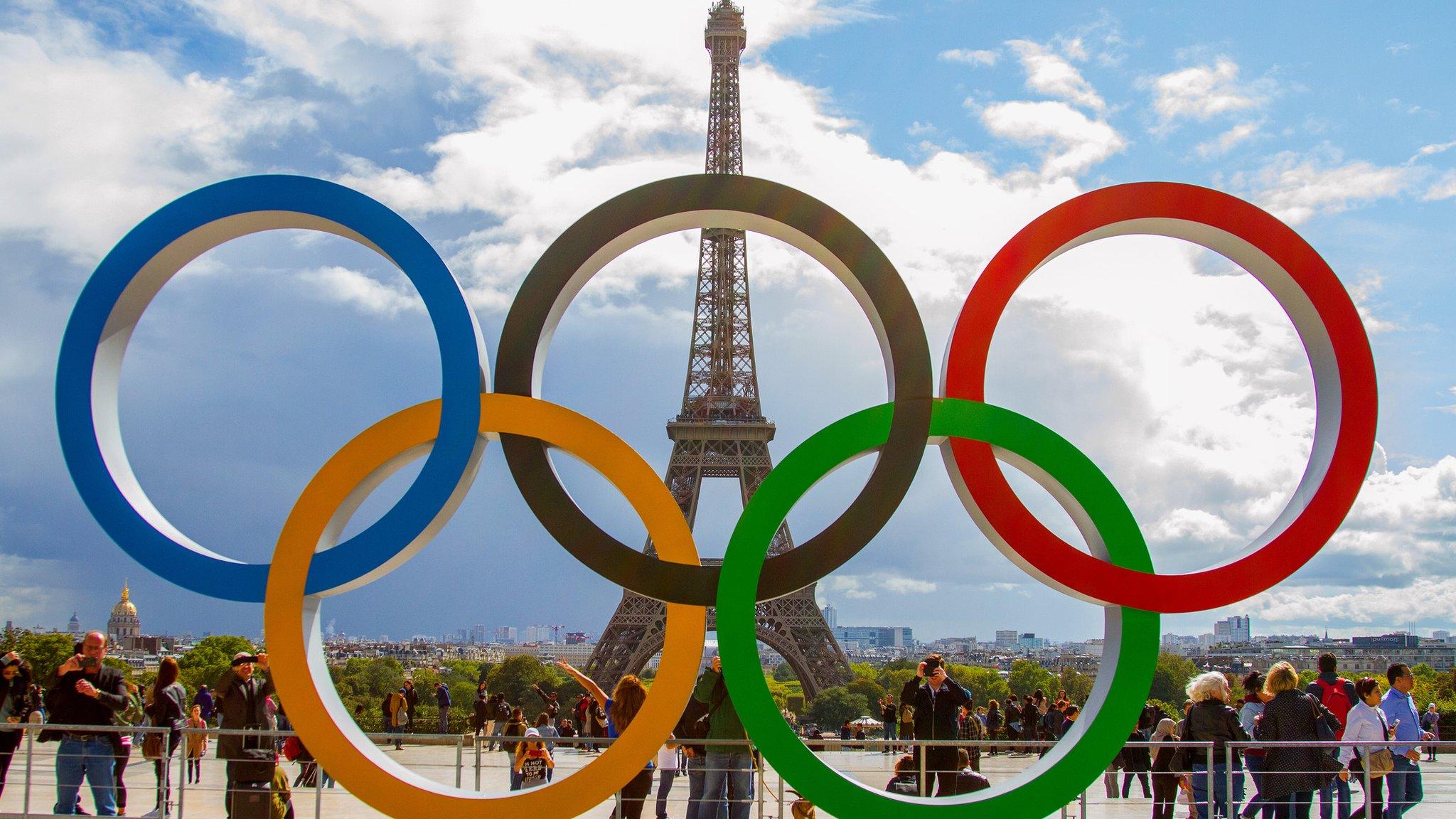Paris to bring back swimming in Seine after 100 years
- Published
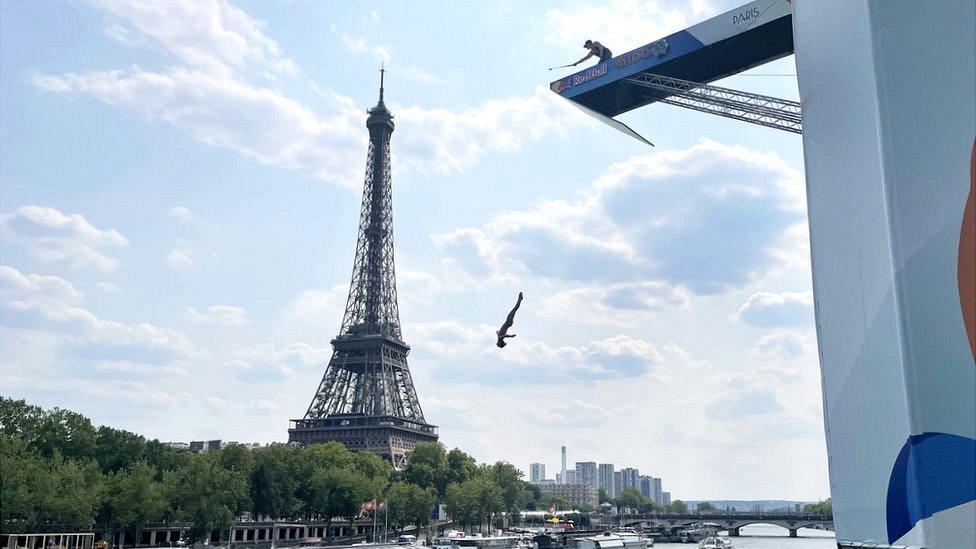
Pollution levels in the Seine have fallen sharply over the last 20 years
With a year to go to the Olympics, Paris is in the final phase of a historic clean-up which will soon see swimmers and divers back in the River Seine.
Banned for a century because of the filthy water, city swimming is set to be one of the major legacies of the Games thanks to a €1.4bn (£1.2bn; $1.6bn) regeneration project universally hailed as a success.
Not only are three Olympic and Paralympic events - triathlon, marathon swimming and Para-triathlon - scheduled to take place in the Seine in central Paris, but by 2025 three open-air swimming areas will be accessible from the quayside.
"When people see athletes swimming in the Seine with no health problems, they'll be confident themselves to start going back in the Seine," predicts Pierre Rabadan, deputy Paris mayor in charge of the Olympics. "It's our contribution for the future."
Like many Western cities, Paris saw its river quality decline drastically thanks to upstream industrial sewage and the sanitation demands of a burgeoning population.
When people see athletes swimming in the Seine with no health problems, they'll be confident themselves to start going back in
Aquatic life suffered to the point where in the 1960s only three species of fish were recorded in the city. In 1923 the authorities banned swimming, though an annual Christmas cross-river competition survived until World War Two.
One of the main problems has been the 19th-Century "single system" drainage infrastructure, which unites household waste water from kitchens and toilets with run-off from rain on the street.
In normal times this flows through a complex of under-street tunnels to treatment centres in the outskirts. However when there is heavy rain, the system is saturated and the excess has to be drained into the Seine.

Improvements over the last 20 years have already led to a sharp reduction in faecal bacteria entering the river.
"But the difficulty has been in eradicating those last few percentage points to ensure it can be officially classified as clean," says Samuel Colin-Canivez, chief engineer for sanitation at Paris city hall.
The solution has been to build a vast underground reservoir which will serve to store run-off in times of heavy rain. The building site can be seen by Austerlitz station - and in front of the Pitié-Salpetrière hospital where Princess Diana died after her car crash in 1997.
From the surface it looks like regular building work. But below, there is a huge cylindrical space 34m (112ft) in depth and 50m wide - enough to hold water from 20 Olympic swimming pools.
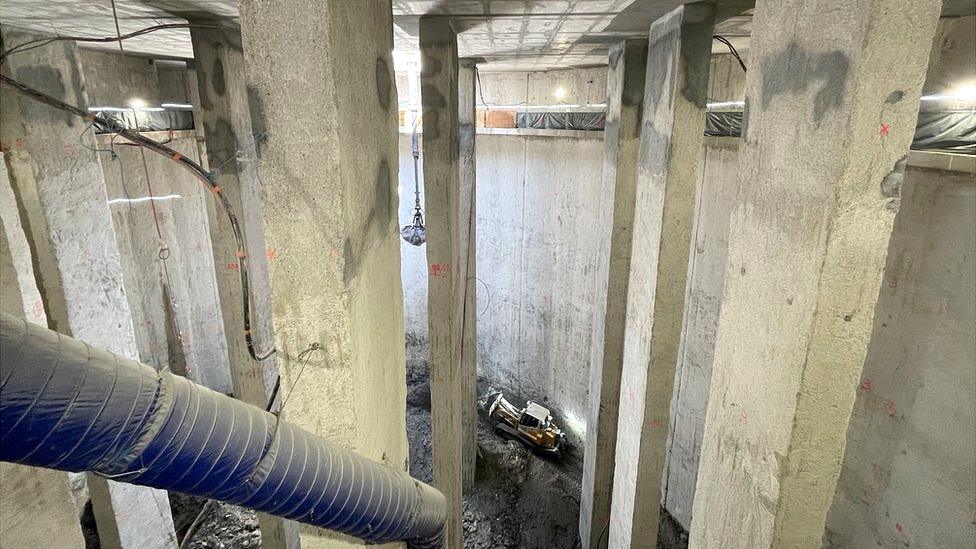
An underground reservoir in central Paris will store wastewater overflow
Machines dig and scrape in the depths, and an excavator with a long telescopic arm reaches down from the surface to remove the earth.
"Up to now the Seine has been the safety valve for the sewage system. If we didn't occasionally allow wastewater into the river, it would have backed up into people's homes," says Mr Colin-Canivez.
"Now a tunnel will bring the overflow to the reservoir, where it can be stored for a day or two - the time for the system to settle down again. Then it will be drained as normal to the treatment centres."
Samuel Colin-Canivez does not rule out very exceptional moments when even with the reservoir some wastewater ends up in the river. But these will be rare, and the city will declare the Seine temporarily "unbatheable".

Australian Frederick Lane won two gold medals in the Seine at the 1900 Olympics
The mega basin will be operational by next year's Games, which start in late July and will showcase the revitalised river not just as a sporting venue but also as the forum for the opening ceremony, with a flotilla of 160 boats carrying 10,000 athletes down a 6km (3.7 mile) stretch to the Eiffel Tower.
One event that will not be taking place in the river - in fact not at all - is angling. And yet in the first Paris Olympic Games in 1900, there was indeed a fishing competition (as well as a host of other other weird sports such as cannon-firing and hot-air ballooning).
"Back in 1900 they measured the fish they caught in the competition, and none was bigger than the size of your hand," says Bill François of the Paris fishing federation.
"Today we have between 30 and 35 species of fish in the city centre, and we get catfish measuring 2m long. It has been a transformation."
According to Mr François, it is not only fish that have come back to the Seine, some reintroduced by angling associations. It is also molluscs, aquatic insects, sponges and crayfish.
"The bottom of the river is developing a coat of the right kind of weed. The clearer the water, the more the weed grows, and then the weed filters the water to make it even clearer - it's a virtuous circle," he says.

Between 30 and 35 fish species inhabit the Seine in Paris
Bill François enters the Seine regularly and is confident that it is already clean enough to swim in. But he does sound one note of warning: rats.
"We anglers know the dangers of leptospirosis (a disease carried in rat urine). Some of us get annual inoculations. And there is no shortage of rats in Paris, including along the quays."
It is true that rats are a perennial problem in the French capital, and the sight of a rat is unlikely to encourage bathers to enter the Seine.
However Paul Kennouche, head of water quality at Paris city hall, says studies show the amount of leptospirosis bacteria is not abnormally high.
"We have not had a single case of leptospirosis in the canal at La Villette (where swimming is already allowed), and that is the same urban environment.
"We do not have any huge concern but we will certainly be monitoring, and taking action to remove rats."
For 20 summers now, Parisians have enjoyed the amenity known as Paris-plages (Paris beaches), in which sections of the river-quays are transformed with sand, parasols and beach games. Only in the north of the city on the Canal de l'Ourcq was swimming permitted in 2017.
Now mayor Anne Hidalgo has unveiled the three spots on the Seine which will also be open for public bathing from summer 2025. They are in central Paris near the Île Saint-Louis, and at the eastern and western ends of the city.
It's not just fish, but humans too who are coming back to the river.
Related topics
- Published19 July 2023
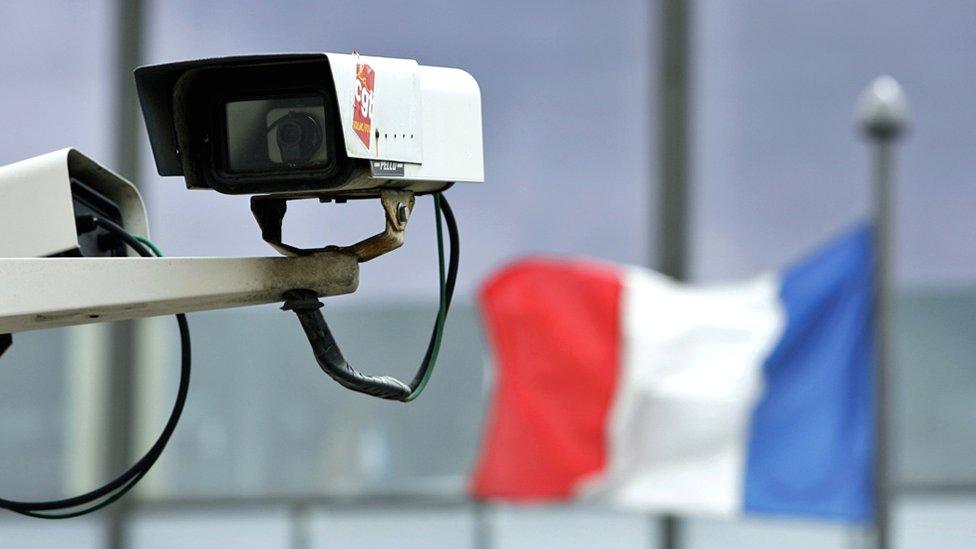
- Published20 June 2023
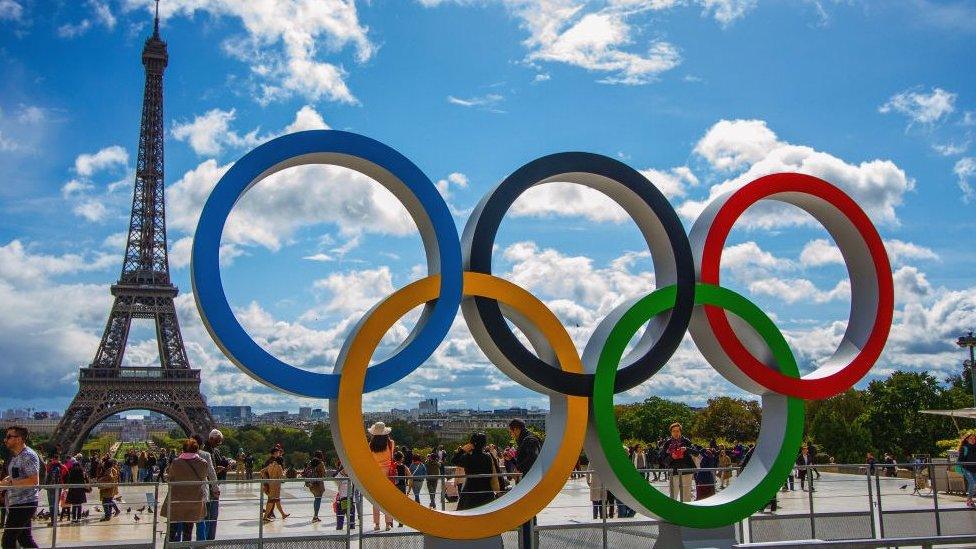
- Attribution
- Published23 May 2023
